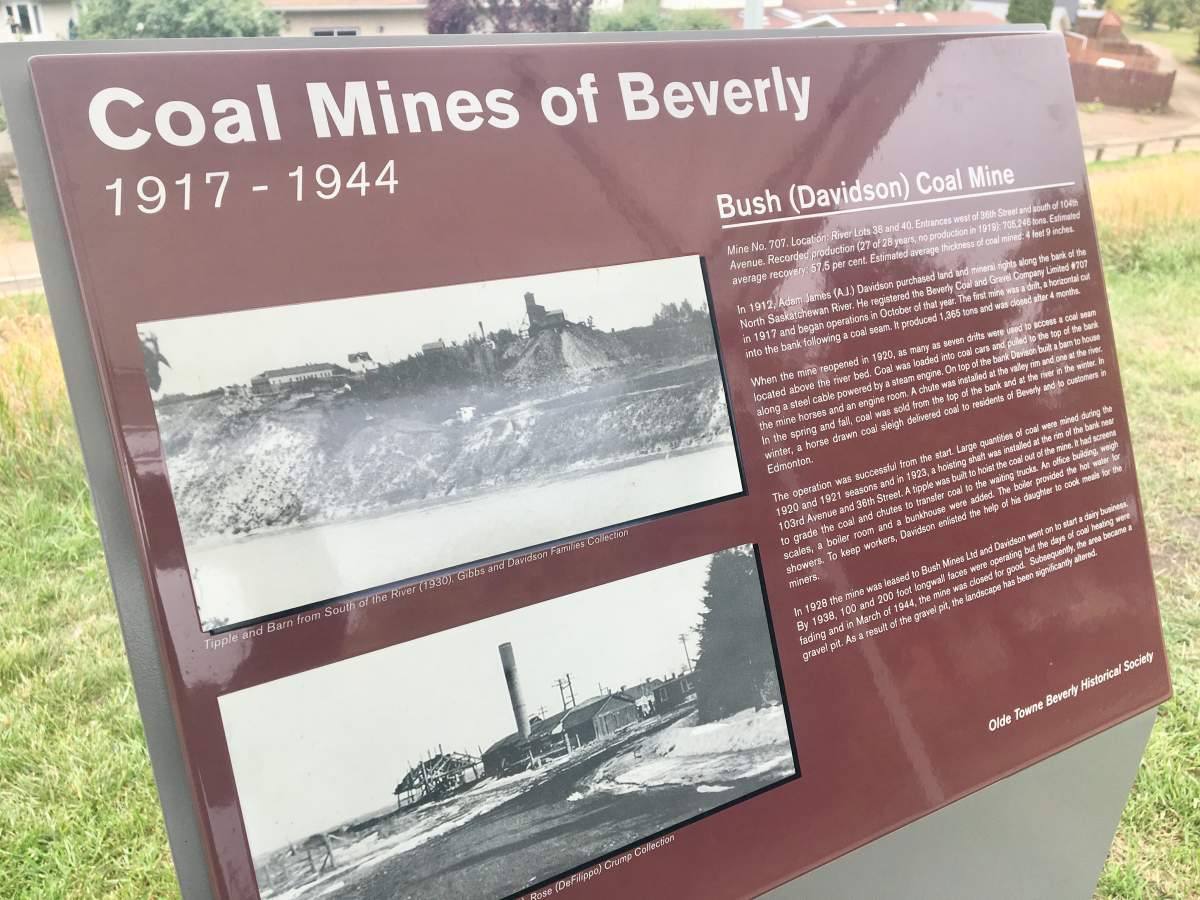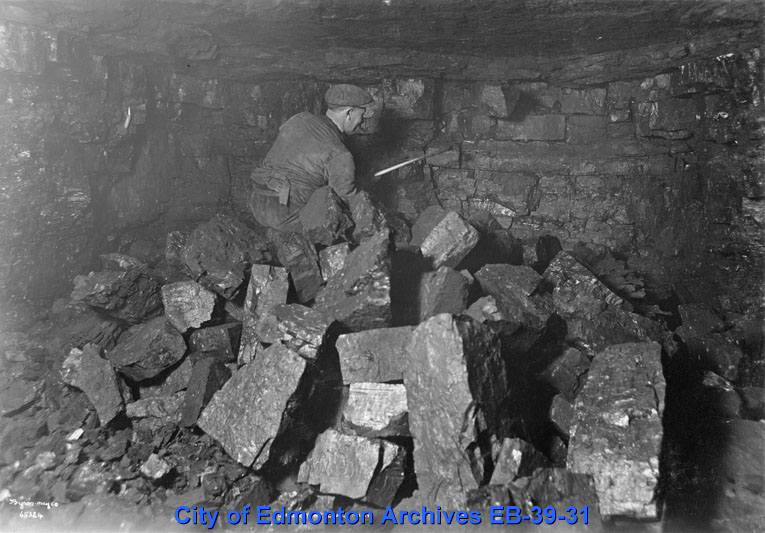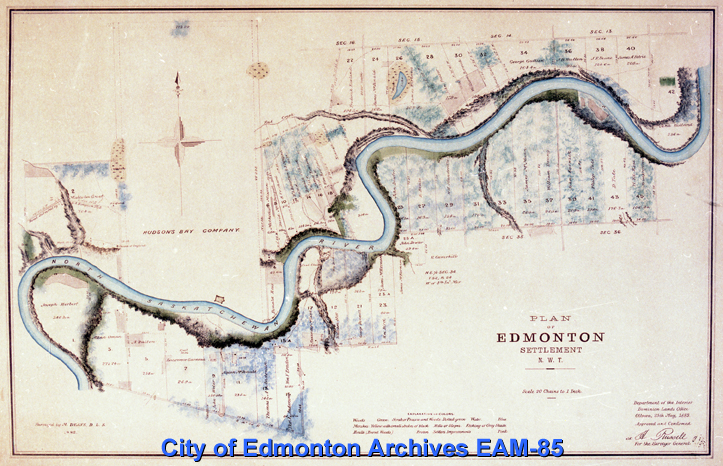Memorial plaques now mark the spot where three historic mines once stood in Edmonton’s Beverly neighbourhood.

A celebration was held at each location Saturday morning to unveil the plaques.
The event was organized by the Old Towne Beverly Historical Society to commemorate the industry that formed the community.
“They are what made Beverly,” said Dan Vriend with the Old Towne Beverly Historical Society. “The mines mark the history.”
Each plaque includes photos and brief descriptions of the mine that stood there.
The largest and oldest mine, the Humberstone, was near the banks of the North Saskatchewan River where Rundle Park is now.
“Bill Humberstone started to mine here in Beverly, when Beverly was not even a hamlet,” Vriend said. “Because he started to mine there, they needed miners. That was the start of Beverly.”

Get daily National news
“The Humberstone Mine produced 180-220 tons of coal a day that was shipped by the Grand Trunk Rail line all over,” Vriend said. “At its height the mine employed over 200 people.”
According to the City of Edmonton, several coal deposits run through the Edmonton area. The largest is the Clover Bar seam in northeast Edmonton, which is located underneath the Beverly area. The seam produced 95 per cent of the coal produced in the Edmonton area. By 1914, coal mining was one of the main industries employing over 8,000 people.
“There were many families that came from Europe to work in the mines, from England, from the Ukraine,” said Cornel Rusnak, president of the Old Towne Beverly Historical Society.
In 1914, the population had grown to 1000 and the community was incorporated as the Town of Beverly. It later amalgamated with the City of Edmonton in 1961.
The two other mines commemorated Saturday were the Bush Davidson which stood near 104 Ave and 36 St and Beverly Mine at 43 St and 121 Avenue.
“The Beverly Coal Mine Company was developed in the 1930’s to help get unemployed people back to work during the dirty ’30s,” Vriend said.
Over 50 mines operated in Beverly between 1900 and 1950.
When the last commercial mine in Edmonton closed in 1974, there were 153 mines and prospects recorded in the city. Mine workings covered over 3,000 acres and produced over 15 million tons of coal. The mining industry had become a significant employer and economic generator in the city.
“Even now — if you went down and dug — you wouldn’t have to dig far to find coal,” Rusnak said. “As tunnels collapse, due to rot, etc., there are many people that put a shovel into their garden and kept on going because of the sinkholes from mine shafts.”





Comments